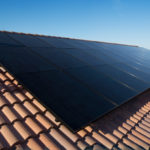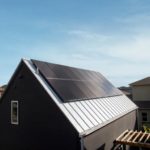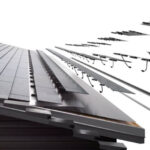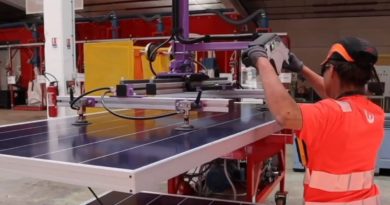Why Solar Installers Hate Tiled Roofs
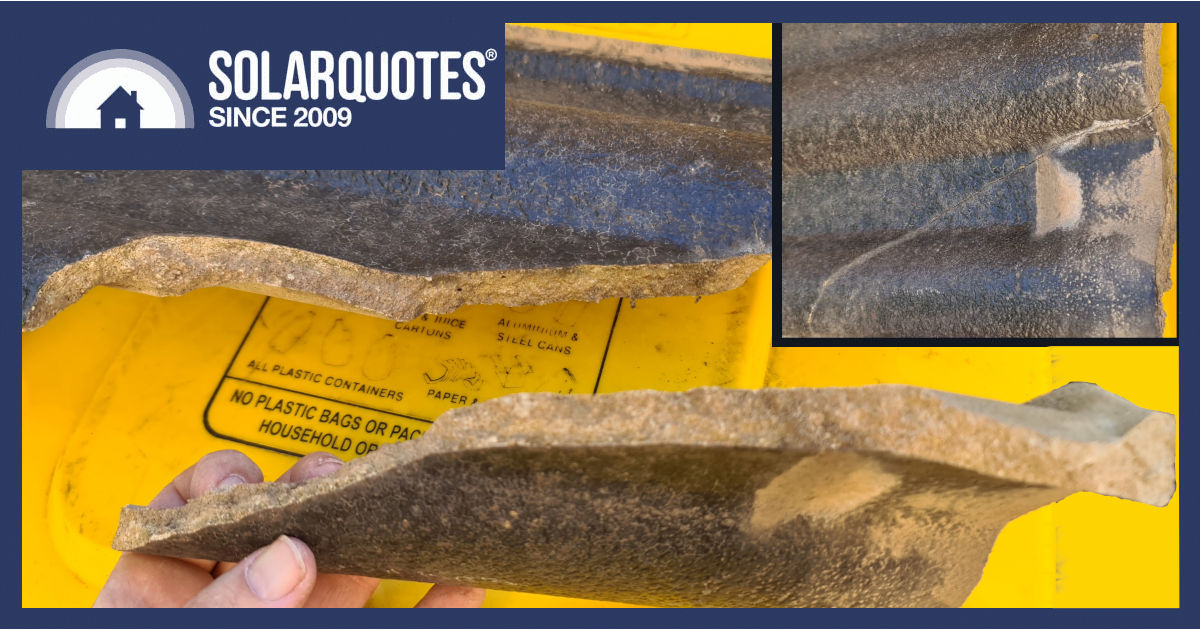
You can see from the dirt, this isn’t a fresh break, it’s just a typical tile failure.
You’d be silly to build a house with a tiled roof.
I can’t make it any simpler, but as we explore more subjects in the series of how to talk to builders, hopefully I can explain the many reasons why tiles make a poor choice for solar roofing.
As we’ve written previously, if you’re considering solar panels on a tile roof then you must get some spares to have on hand for install day.
Being Expensive Isn’t a Virtue
One of my more eccentric workmates was a native of Ireland, and his prejudice was that “only poor people had tin roofs”, but he didn’t seem to notice he was living in Australia now, where tile roof restoration can make you poor instead.
Unlike a Gucci handbag, tiles are outrageously heavy. You need twice as much structural timber to frame the house, and harvested koala habitat to make tile battens. The sheer weight of all that broken concrete causes roofs to sag, eaves to droop, and water to pool – thereby rusting the gutters.
It sounds ludicrous but believe me, when a house shrugs off the burden of 16 tons of tiles, I’ve seen first hand the ceiling has lifted off the kitchen cupboards. It had been groaning under the weight and now sighed “thank you”.
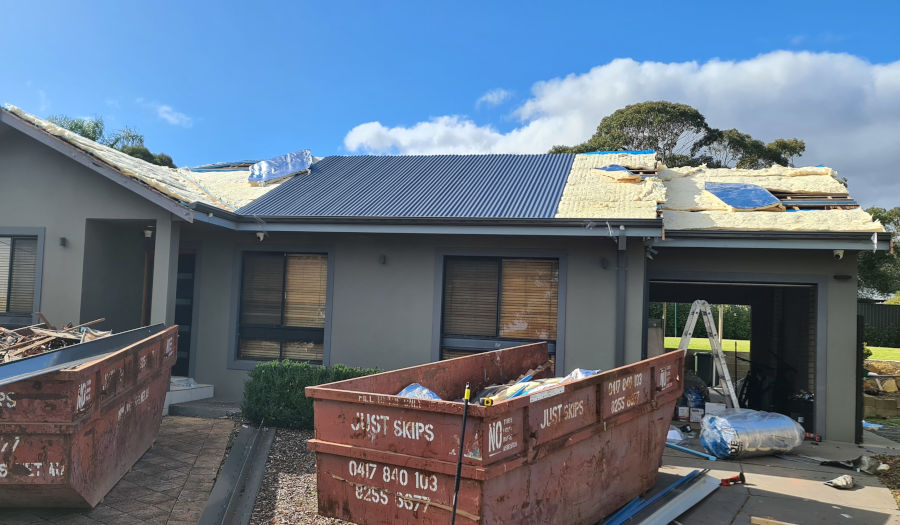
Here we see a house with new blanket insulation and roof tiles placed properly – in the bin.
Electricians Love Tiles
Sparkies frequently say that when it comes to installing new wiring, you just have to lift a few tiles and run the cable underneath. However, some shonky tradies will cut corners by placing the cables right on top of the rafters, blatantly disregarding the cardinal rule requiring a 50mm clearance rule from any finished surface.
To be honest, on a cruddy old 1970s brick veneer house, dropping cables down the wall is easy when there’s no wall insulation or vapour wrap. It’s a glorified cardboard box, so the air conditioning and heating bills are incredible, too.
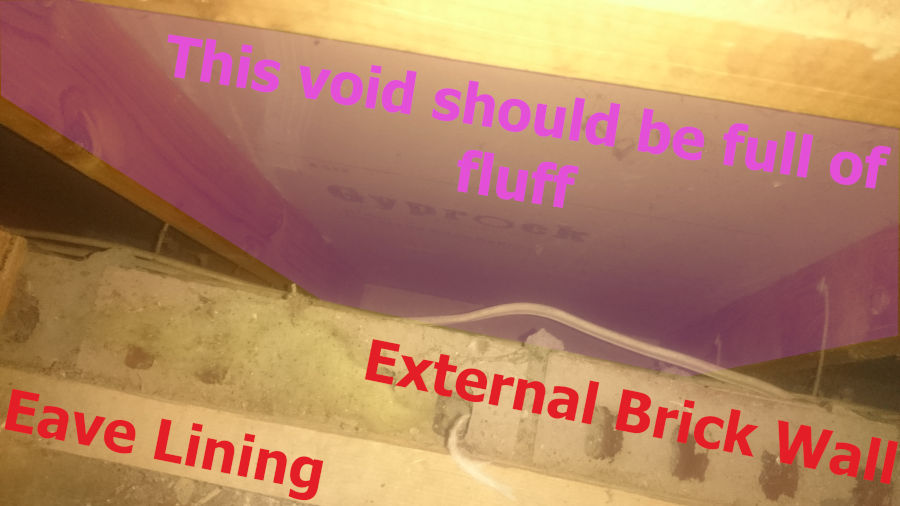
Looking down from the top, this is a typically poor Australian brick veneer house wall.
The sarking shown below is where this “easy” line of reasoning falls over. Putting new wiring through the roof means cutting this woven, foil-faced membrane, which compromises the insulation and waterproofing function it’s supposed to serve. While it can be stuck back together with tape, many won’t bother because it’s time-consuming and invariably a band-aid solution.
Thieves Love Tiles Too
After going through a break-in myself, I can tell you it makes your blood boil. What’s even worse is that no matter how many locks and bolts you have, a tiled roof is like an open door for crooks. They can climb up, make hardly any noise, and get in without needing any tools. It’s that easy for them, and that’s what makes it so infuriating.
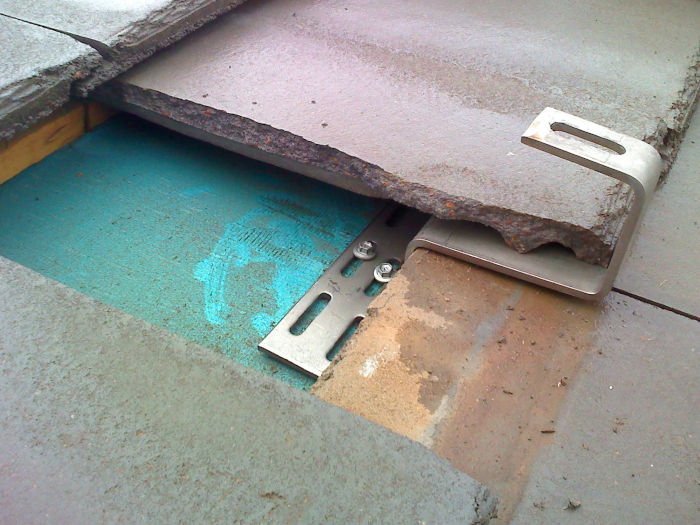
This tile cracked when it was stepped on, but it shows how the tiles should be lapped over the bracket to make the install mechanically waterproof, and the dirt that soon works it’s way through the gaps.
Solar Electricians Hate Tiled Roofs
Not least because everywhere you install a bracket, the tiles must be ground out or the edges attacked with a scutch hammer. While the hammer approach is fast, it’s not neat. However, when you grind with a diamond wheel, OH&S laws now demand its done wet to control silica dust. So the tiles have to be marked, taken down, seen to with an angle grinder and a hose, before being taken back and fitted to the right hole in the roof.
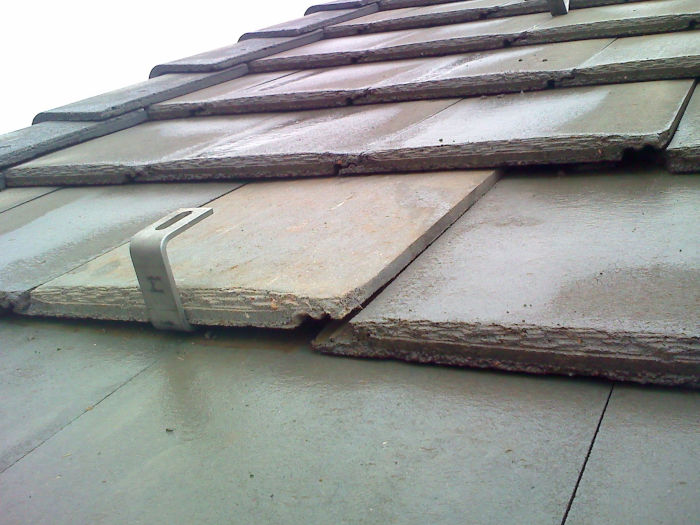
Note this tile bracket displaces two tiles, but they’re so thin there’s little material to grind.
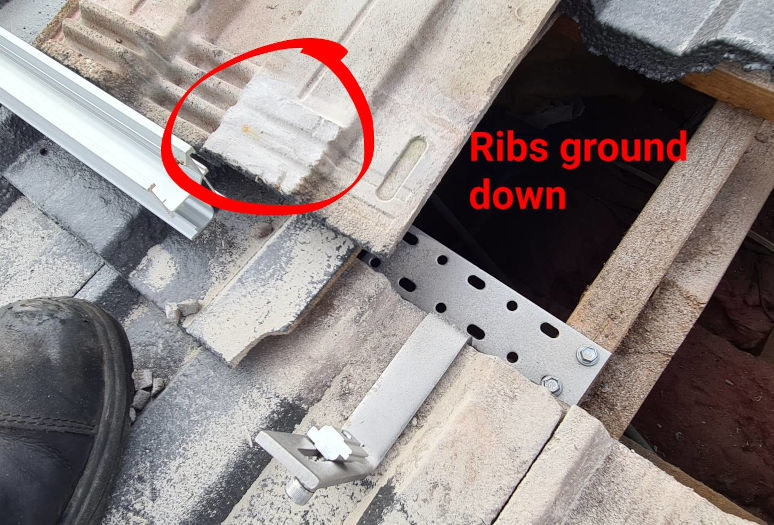
Dust everywhere
Terror-cotta
Clay tiles are even worse because they are invariably more brittle and more difficult to find spares. Many people don’t realise glazed tiles aren’t sealed on the underside, so they effectively rot without you noticing. That is, until you step off the ladder and find they crumble underfoot.
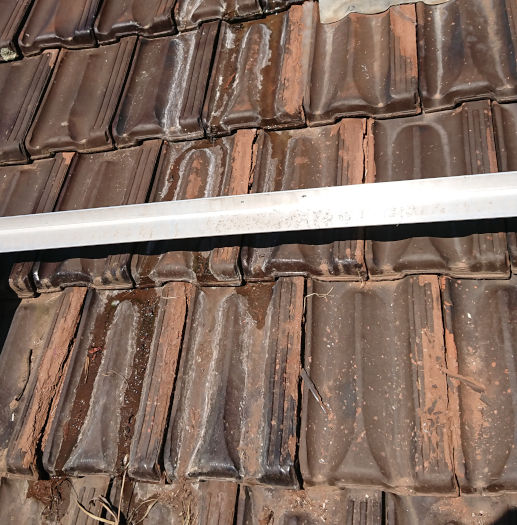
Glazed tiles aren’t forever.
If you have a slate roof or flat clay shingles, then the best solution is to budget for both a tiler and a solar installer on the same day. Organise the tile expert to put the hangar bolts through the roof and give you a warranty on how water-tight the dozens of holes are. Then ensure they oversee the solar installers, fixing any breaks as the job progresses. It’ll be expensive, but think of it as cheaper than a sodden ceiling collapsed on your furniture.
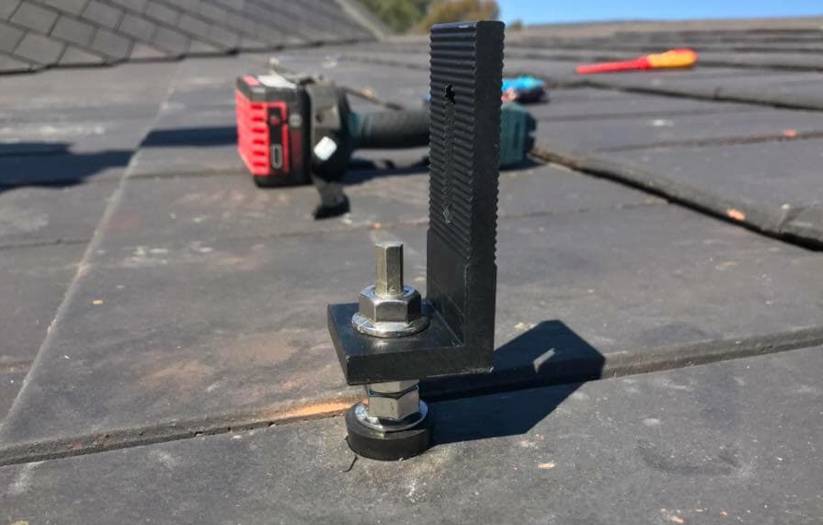
The gun installer’s answer to flat shingles is a hangar bolt screwed into the rafter.
Tiles Limit The Size Of Your Solar Power System
Every part of your tiled roof is effectively 600mm shorter because hips and ridges can’t be disturbed; or will need repointing afterwards. As panel frames get thinner and rules more stringent, turning to landscape solar panel orientation doesn’t help because tile roof framing doesn’t offer as many increments to install solar racking.
The image below shows what we call diving boards. The installer hasn’t been brave enough to disturb the ridge tiles, so with brackets too close together these panels will flap and rattle in the wind.
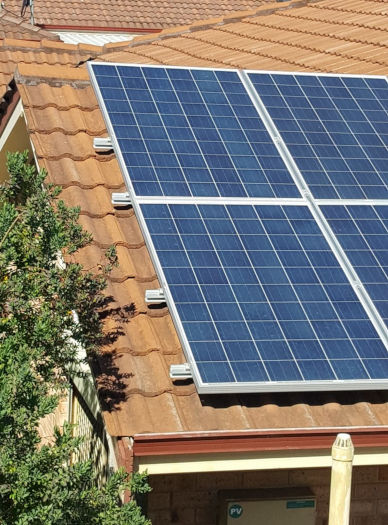
The top half of both of these panels is unsupported
This job pictured below needs to either:
- lose three panels by turning the bottom row to landscape and moving everything down 300mm
- or the top row of brackets could be installed 300mm further up. This almost never happens because after fitting brackets, the ridges would then need repointing, preferably before the panels go on.
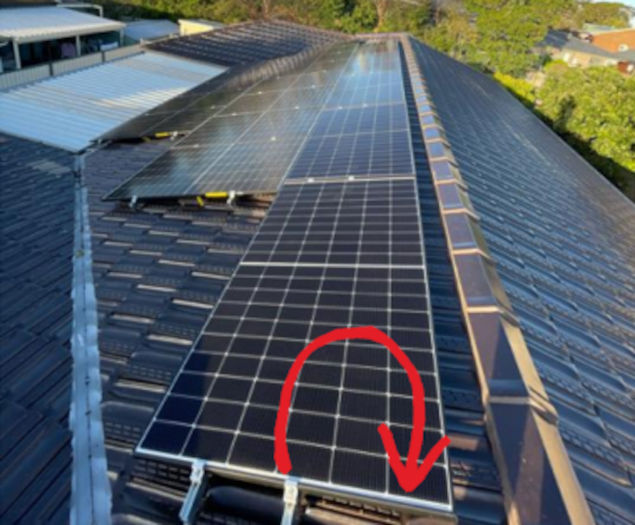
An otherwise excellent job rendered dubious because the brackets are just one tile apart.
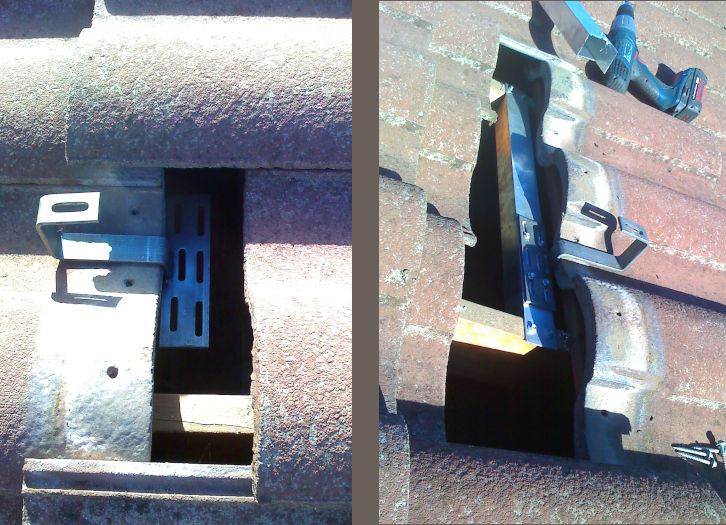
Tile bracket hanging in mid-air on the left. Time-consuming spreader fabricated to support it on the right. Sarking foil would make this even more difficult.
Believe it or not, back in the dark ages when solar power was a cottage industry, I used to hand-make tile brackets from 40 x 5mm steel flatbar. Cutting full-lengths into stacks of 5, drilling 4 holes, then pressing two bends in each piece and making two 90° twists. Once you were into a rhythm doing the process they effectively took about 56 seconds each from memory. No good for the job pictured below though.
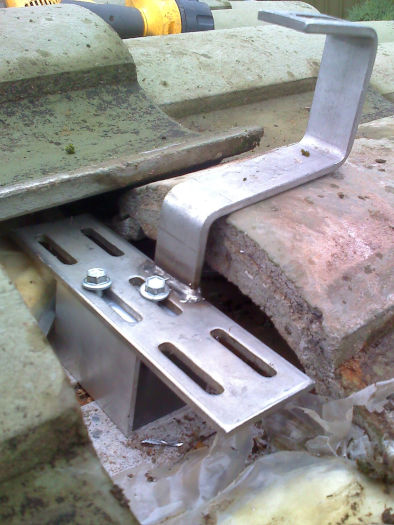
Deep spanish tiles with no less than a 50mm spacer bracket and bonus compromised insulation on a raked ceiling.
Tiles Are All They’re Cracked Up To Be
So many times, I’ve just walked across a roof and found cracked and broken tiles even before we’ve started work. I genuinely think if it wasn’t for tradition and the comfortable visual familiarity of archaic materials, people would laugh at the very idea of slate or timber shingles.
Where else on your house do you find parts of it are broken and leaky, and simply accept that as normal ?
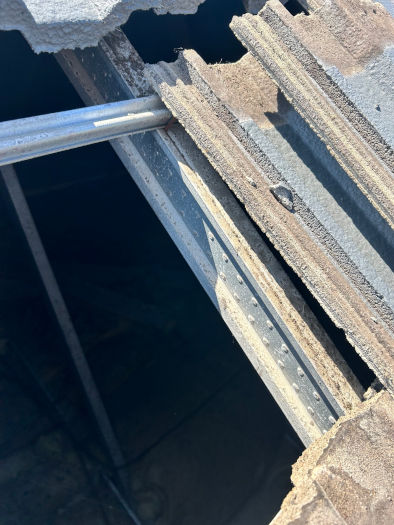
Tin-framed tile roofs would have to be the worst. It desperately needs a thermal break, yet there’s no way you can properly insulate it.
Even without inevitable cracks, tiles are porous and they soak up water, making the roof even heavier when it rains. They’re a roof prone to water leaks. Without sarking they’re a sieve for dust, daylight and worst of all they invite ember attack in a bushfire.
Don’t be worried about “what will the neighbours think!” Either they can chip in to pay for the roof they want to look at, or they can take a running jump off it.
Iron Roofing Is So Much Better
We’ll finish here with some hard truths:
- Iron reinforces the house – literally a brace over the roof.
- It’s trafficable – walk without fear.
- It’s lighter – less material is required.
- It’s cheaper and more efficient – see above.
- It’s maintenance-free – needs no regular washing, painting or repointing.
- It’s more secure – screwed in place, not just sitting there.
- It’s fundamentally better – excluding dirt, wind and rain.
- It’s outright more durable – suitable for the extremes of tropical weather
- And it’s rated for fire – with far fewer gaps subject to ember attack.
Original Source: https://www.solarquotes.com.au/blog/roof-tile-problems-solar/



